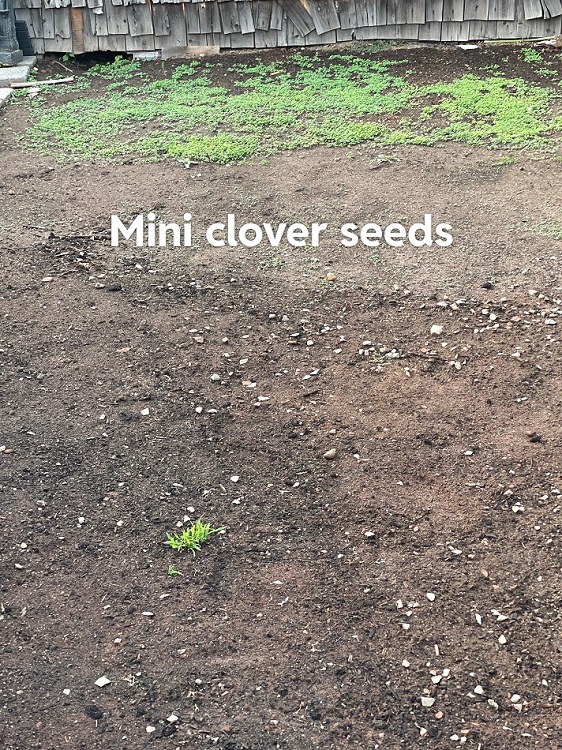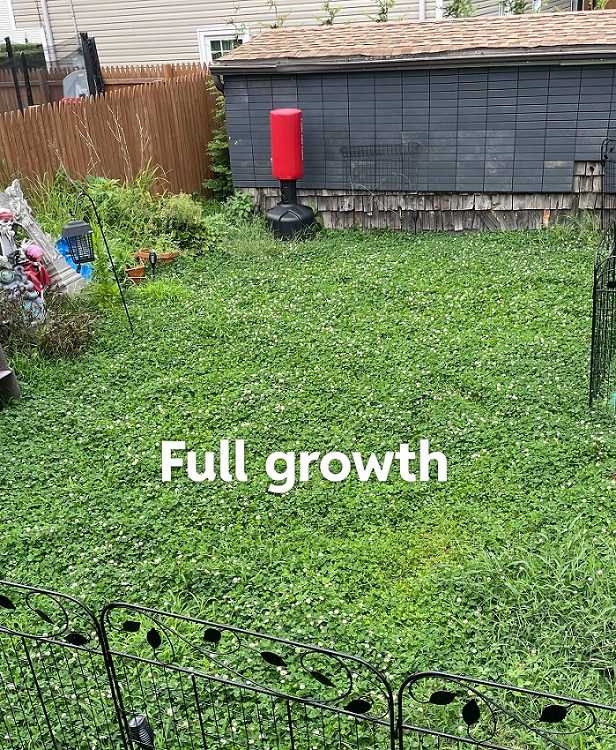A Redditor has shared their utterly transformed backyard with the subreddit r/NoLawns, along with an explanation for how they made it happen.
"When we bought the house the backyard was just dirt," they wrote on their post. "Tried 6x8 artificial grass rugs but not great for drainage and dog urine. Finally decided on mini clovers. Little to no effort, just drop seed and water. Love all the little pollinators that come to visit. Only mow when it gets too overgrown but love it. Our own little meadow."


Photos of the transformation process show the artificial lawn, then soil with the Outsidepride Perennial White Miniclover seeds planted, and finally the full growth of the miniclover lawn, which is lush and green.
According to the University of Plymouth, artificial grass can absorb significantly more radiation than living grass, which contributes to global warming. Additionally, it leaches microplastics into the soil, displaces living plants, and does not provide food for any living creatures.
That's why a natural lawn is a better alternative than artificial. The miniclover planted by this Redditor will take up carbon dioxide from the atmosphere and release oxygen, and the flowers will provide a food source for bees.
However, according to the University of Maryland Extension, this clover is native to Europe. According to the Xerces Society, plants native to our own region are typically better adapted to local conditions and are better for our wildlife.
When considering rewilding your own yard — which has a litany of personal and environmental benefits including conserving water and reducing time on lawn maintenance — consider the plants that are indigenous to your area. Eco-friendly, low-maintenance artificial lawn replacement possibilities include buffalo grass, which is native to North America, and xeriscaping.
Redditors took to the comments section to ask questions and offer compliments and advice regarding the miniclover lawn.
"Pro tip: add some common violet seeds this fall," one user said. "They'll add a nice splash of color in the early spring and provide much needed food for queen bees and wasps coming out of hibernation."
"Looks great!" another commented.
Join our free newsletter for easy tips to save more, waste less, and help yourself while helping the planet.









